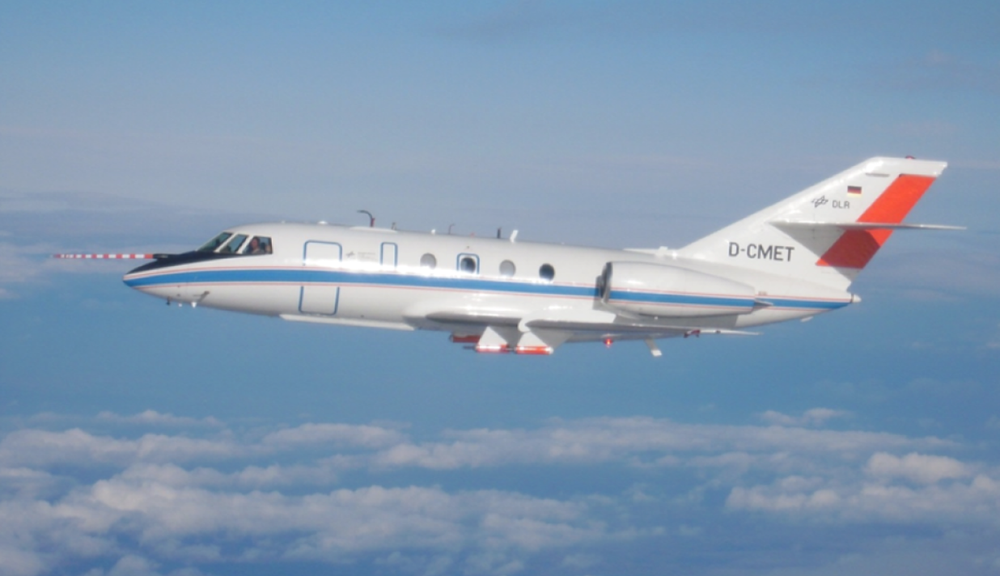Laser-based flight instrumentation
Laser-based air data sensors offer great potential for flight safety and the reduction of fuel consumption. The warning of turbulence at cruising altitudes or the adaptive load reduction of aircraft structures are made possible by laser-based sensor technology with a correspondingly high data rate. The realisation of formation flights of aircraft to reduce fuel consumption on transatlantic routes can be supported by appropriate sensor technologyn.

Pilots need absolutely reliable information about the flight status and environmental conditions of their aircraft at all times - the flight instrumentation provides them with data on altitude, airspeed and outside temperature, among other things. To supplement conventional measuring systems, such as Pitot tubes, laser-based optical sensor systems with greater measuring accuracy and reliability are being developed and evaluated at the Institute of Technical Physics. In addition to laser spectroscopic methods, laser anemometry methods are also being investigated.
For modern, safe and increasingly complex air traffic, pilots must have absolutely reliable information about the flight stability, attitude, altitude and heading of their aircraft at all times. The flight instrumentation provides them with the basic flight parameters, such as
- Air pressure,
- Flow velocity,
- Angle of attack,
- Temperature.
In addition to information on altitude and airspeed, the pilots receive important warning messages to prevent a stall, which can interrupt the lift of the wings.
Until now, this data has been provided by sensor systems such as Pitot tubes (pressure gauges), airflow angle gauges and thermometers attached to the outside of the aircraft fuselage. Flight safety depends crucially on the reliability of this measurement data.
At the Institute of Technical Physics, scientists and technicians are working on the question of whether laser-based, optical sensor technology can supplement or even replace conventional measurement systems for flight data acquisition in terms of their reliability and accuracy. In particular, the aim is to test measurement methods that have a measurement volume with a significantly reduced flow influence from the aircraft fuselage itself. This advantage of optical sensor systems is particularly due to their lateral alignment to the aircraft fuselage. This also results in greater protection against icing or contamination compared to conventional measuring probes close to the fuselage or wing.
The Institute develops and evaluates laser and detector systems suitable for use in aviation based on temperature- and pressure-sensitive absorption spectroscopy and laser-based Doppler anemometry for use in flight.et.
